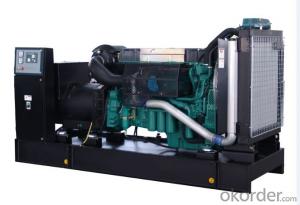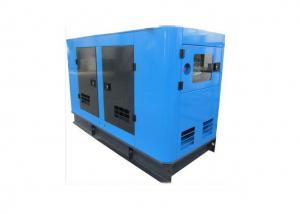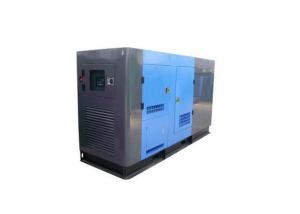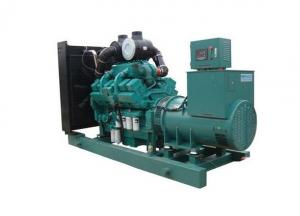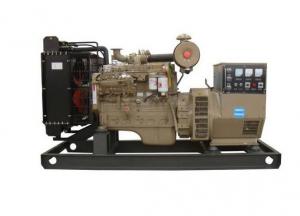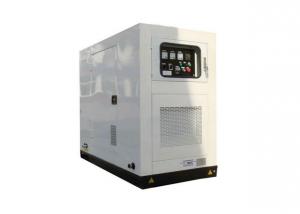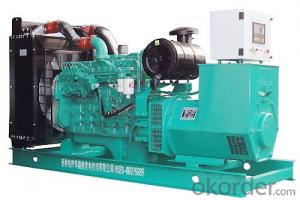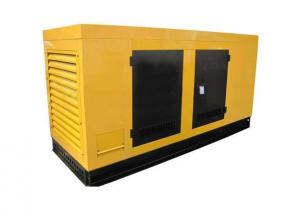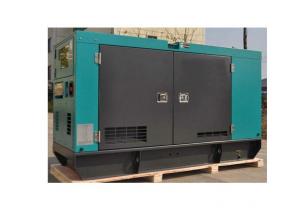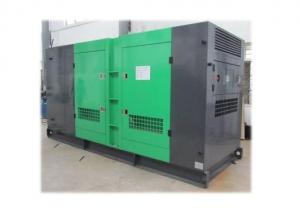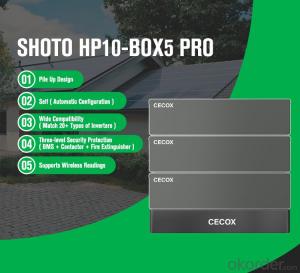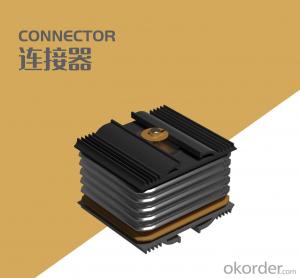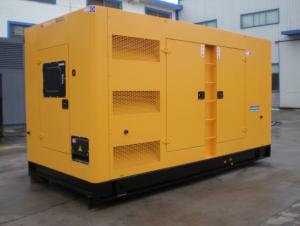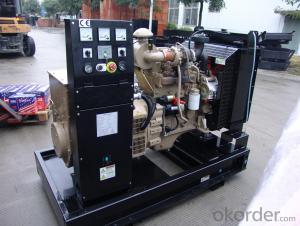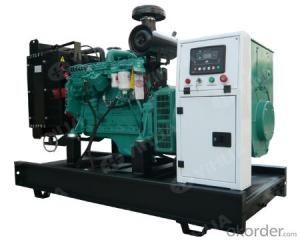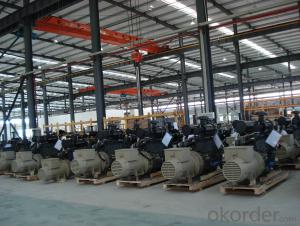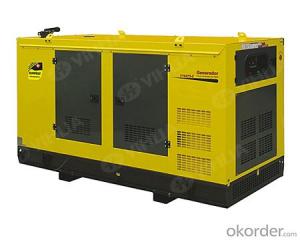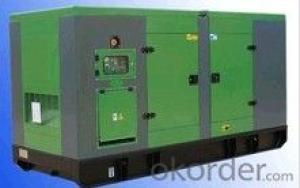Diesel Generator Cummins 300kw/375kva
- Loading Port:
- Shanghai
- Payment Terms:
- TT OR LC
- Min Order Qty:
- 1 unit
- Supply Capability:
- 100 unit/month
OKorder Service Pledge
OKorder Financial Service
You Might Also Like
Product Description
A diesel generator is the combination of a diesel engine with an electric generator (often an alternator) to generate electrical energy. This is a specific case of engine-generator. A diesel compression-ignition engine often is designed to run on fuel oil, but some types are adapted for other liquid fuels or natural gas.
Diesel generating sets are used in places without connection to a power grid, or as emergency power-supply if the grid fails, as well as for more complex applications such as peak-lopping, grid support and export to the power grid.
Main Product Features:
General Features: Engine (CCEC Cummins NTAA855-G7)
Radiator 40OC max, fans are driven by belt, with safety guard
24V charge alternator
Alternator: single bearing alternator IP23, insulation class H/H
Absorber
Dry type air filter, double fuel filter, oil filter, coolant filter
Main line circuit breaker
Standard control panel
Two12V batteries, rack and cable
Ripple flex exhaust pipe, exhaust siphon, flange, muffler
User manual
Product Specifications:
1. Manufacturer / Model: CCEC Cummins NTAA855-G7, 4-cycle
2. Air Intake System: Turbo, Air/Air Cooling
3. Fuel System: PT type fuel pump, EFC
4. Cylinder Arrangement: 6 in line
5. Displacement: 14L
6. Bore and Stroke: 140*152(mm)
7. Compression Ratio: 14.0:1
8. Rated RPM: 1500rpm
9. Max. Standby Power at Rated RPM: 377KW/513HP
10. Governor Type: Electronic
FAQ:
Q1: What is Prime Power and Standby Power Rating?
A1: Prime Power (PRP): Prime power is available for an unlimited number of annual hours in variable load application, in accordance with GB/T2820-97(eqv ISO8528); A 10% overload capability is available for a period of 1 hour within a 12-hour period of operation. Standby Power Rating (ESP): The standby power rating is applicable for supplying emergency power for the duration of a utility power interruption. No overload, utility parallel or negotiated outage operation capability is available at this rating
Q2: How do we guarantee the quality of our products?
A2: We have established an advanced quality management system which conducts strict quality tests at every step, from raw materials to the final product.
Q3: How soon can we receive the product after purchase?
A3: Within three days of placing an order, we will begin production. The specific shipping date is dependent upon international and government factors, but is typically 30 to 40 workdays.
Q4: What is your after sales service?
A4: CNBM provides a full line of brand new and high quality products. Each and every unit is strictly factory tested. Warranty is according to our standard conditions: a, 15 months, counted on the day CNBM sold to the first buyer; b, One year after installation; c, 1000 running hours (accumulated); subject to the earlier one. Service and parts are available from CNBM or distributors in your location.
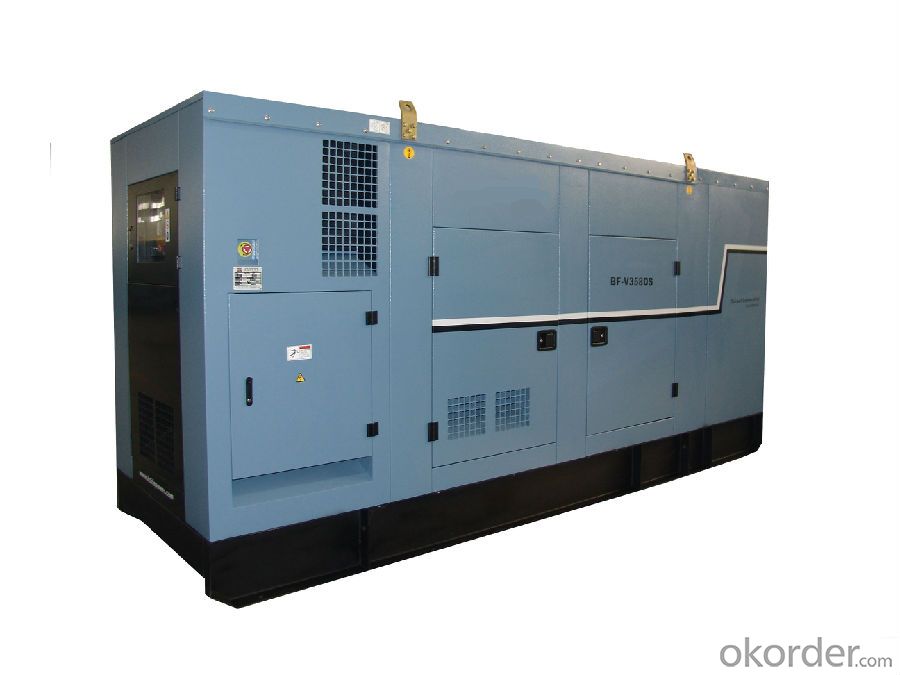

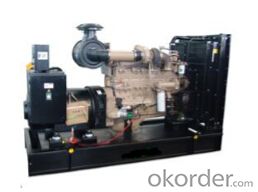
- Q:I noticed how all the commuter trains here in Massachusetts use diesel engines. Will they switch to overhead lines in the not so distant future?
- Bombardier has come up with some new technology that will not require the ugly overhead power lines. Right now its being geared for trams and light rail. A box is buried underneath the track, and when the train passes over there is a surge of energy that gets passed to the train battery. A person can walk over the track and box, but they will not be affected. Right now the technology is not advanced enough for heavier trains. Massachusetts will probably go to a new dual mode locomotive by Bombardier thats being built right now in Kassel Germany. It has a pantograph on top for the power lines. When it comes to a line without power it uses diesel and battery. Its really a revolutionary locomotive that will be ready in 2011. New Jersey Transit has 28 on order with an option to buy almost 90 locomotives if it works out.
- Q:Electrical Engeenearing
- A diesel power plant is a stationary installation incorporating one or more diesel generator sets with controls and switchgear. Diesel plants are usually used as emergency backup systems for military installations, hospitals, and other vital installations that depend on reliable electric power. There are also diesel power plants that are the only power supply for remotely located installations and communities; for example, remote radar stations and island resort towns. In a diesel plant, there are one or more diesel generator sets, consisting of a diesel engine and a suitable generator. A typical arrangement would involve three generators of which any two can handle the peak load while the third can be held as a standby unit or dismantled for major maintenance at intervals. There will be a switchyard that contains the electrical contactors and safety devices for connecting the generators to the grid as needed, and there will be control panels for the individual generators, as well as synchronizing gear to keep the generators in phase. In many installations these controls are computerized and can be operated and monitored at a distance over the internet or other communications arrangement. Also, there will be arrangements for handling the fuel required by the engines. Often there is a large tank and separate day tanks for each engine. This type of arrangement helps ensure that the entire supply is not lost in case the fuel plumbing or day tank for one generator set springs a leak.
- Q:I have been researching EV cars and conversions and am wondering about using a generator instead of batteries. I am not an enviro-nut concerned about making an emission free vehicle, just one that is cheap to drive. It seems to me that using a generator to power the motor, although it would use gas, would be way more efficient than a normal gas engine that is in a car, and would be lighter than batteries. Also, if it is a diesel generator I could run bio-diesel to cut back on emissions. Am I correct in this assumption?
- You would be losing efficiency each time you transferred energy. Let's say a generator is 50% efficient (that is, half the energy contained in the fuel is transferred), then the electric motor is 50% efficient. Now you are already only getting 25% efficiency from the fuel. You lose efficiency because of various factors including friction and resistance. If you could get 100% efficiency, then you have just invented perpetual motion.
- Q:Every time i go to the pawn shop i always end up craping my pants. I crap em so hard that i got to leave to change and come right backnext time i best bring a diaper because the pawn shop always does it to me. Everything is pretty much stolen and new so i get 50% off pawn price because they know me for years.The last time i craped my pants was when i got this really nice 2000$ diesel generator for 400$ and BAM!Didn't even feel it coming, reached in my pocket to count my cash and the next thing i knew was i got a landslide running down my leg filling up my work boot. I bought it there and then anyways with crap on my leg because it was too good a deal to let some other guy steal it, that's my job!I do it at home on the computer sometimes when i'm looking at tools on harborfreight. It never happens with anything else, why only tools?
- lmao this has to be a joke, made me lol in real life though, good one xD
- Q:I know that various types of locomotive's produce different amount of horse power. Here's the question: A single locomotive (any type) about what would be the average speed it could gain in 0 to 4 seconds on take off. Any smart A** answer will be reported for abuse, Thank you.
- Hello Brian; From my experience I would say anywhere from 15-20mph. 28 years of railroading. Switch engines don't have to spool up to start, whereas road engines rev up a lot before moving. junkman
- Q:Does a current carrying conductor experiences a force onlywhen the current is in the same direction as the magnetic field?
- The answer to your question is, No. Fq* v*B*sin(theta) F: Magnetic force. q: Charge inside the conductor (in this case, that is causing the current). v: Velocity of charged particle. B: Magnetic Field. Theta: is the angle between the velocity vector and magnetic field vector (angle between v B). So if the current is in the same direction as the magnetic field, the angle between (v B) is zero or 180 degrees making sin(theta)0 which means F0 It experiences a force only when the current is perpendicular to the magnetic field or at least makes an angle theta with the field that is not zero or 180. what this means is there has to be a velocity component normal to the magnetic field.
- Q:1. How does a generator work?2. What is the use/importance of a transformer?3. How does a capacitor work? 4. How does a rectifier work? (rectifier circuit)5. What is a p-type semi-conductor?6. What is an n-type semi-conductor?7. How does electromagnetism work in a motor?8. What are the processes in electrical energy transmission from electric power plants to consumers?I prefer simple explanations so it can be easily understood. Thanks.
- the answer is C. The reasoning in the back of it truly is, the generator is extracting means out of the circulation of the bicycle. because it rolls down the hill, your bicycle sensible factors % because means received from gravity will upload means to the bicycle. once you've a generator connected to the wheel, the means will be diverted between bicycle gaining % and shining the person-friendly bulb. Now, extra means person-friendly bulb consumes, extra means receives diverted to the generator and a lot less is on the marketplace to attain the speed. ultimately inspite of the truth that, if there's no person-friendly bulb (aka burnt), then no means receives diverted to the generator. hence, maximum means will be accessible for the bicycle. hence, it sensible factors the most % if the bulb is burnt.
- Q:i could only find a weight on one website and it said around 8,000 lbs. This one is rusted out and were planning on taking it in for scrap normally we would cut it up and take it in but this thing is a monster im thinking about renting a flatbed if it is 8,000 it would be worth it. The cooling coil and somekind of box with all the controls has been removed but they probobly werent any more then 500 lbs
- That weight should be very close minus loss to rust. I would call a scrapyard first to get an idea of what they are paying, especially because part of it is a diesel engine and there are guidelines with some yards how they will accept machinery, such as clear of any fluids. The copper or aluminum wires and generator cores will probably be most valuable parts and might be worth removing and forgetting the rest depending on what the scrap yard says about the engine and rusted steel shell is worth. It will be a hard move, even for a flatbed truck because the little winch will have to pull that generator which is super heavy and dead weight. Final thing to look into is whether there is any value in any part of it. This is a very popular size generator and is still produced today except with Cummins diesel engine, maybe someone has an older one with same engine and their block is cracked!?
- Q:I'm a student majoring in Architecture one of my class, Building Utilities, needs me to survey a high rise building. In my team, we divided the parts bc there are so many and one of my job is to electricity. Can someone explain to me the meaning of phase, R.P.M, power factor, and (especially) their respective units/numbers from this picture
- 'Phase' has no units: it is merely a number, in this case 3. It is the number of different live supplies coming out of the generator. On the blue label in your picture, to the right of the word PHASE there is a small clear panel. The 3 followed by a greek letter 'phi' is the number of phases. Then there is '4 W'. This tells you that the generator is wired in 'star' layout with a total of four wires. Three carry the live supplies and one is a neutral wire. Your building will have a lot of wall outlets and some heavy loads; for example, the motors for the elevators. The wall outlets are single phase, connected to only one of the phases from the generator. Heavy loads are often connected to all three phases. 'R.P.M'. is revolutions per minute , which means 'how many times the rotating part of the generator rotates in one minute'. 'Power factor' again has no units. An explanation of what it is? I'll come back to that later (or someone else can) .
1. Manufacturer Overview |
|
|---|---|
| Location | |
| Year Established | |
| Annual Output Value | |
| Main Markets | |
| Company Certifications | |
2. Manufacturer Certificates |
|
|---|---|
| a) Certification Name | |
| Range | |
| Reference | |
| Validity Period | |
3. Manufacturer Capability |
|
|---|---|
| a)Trade Capacity | |
| Nearest Port | |
| Export Percentage | |
| No.of Employees in Trade Department | |
| Language Spoken: | |
| b)Factory Information | |
| Factory Size: | |
| No. of Production Lines | |
| Contract Manufacturing | |
| Product Price Range | |
Send your message to us
Diesel Generator Cummins 300kw/375kva
- Loading Port:
- Shanghai
- Payment Terms:
- TT OR LC
- Min Order Qty:
- 1 unit
- Supply Capability:
- 100 unit/month
OKorder Service Pledge
OKorder Financial Service
Similar products
New products
Hot products
Hot Searches
Related keywords


